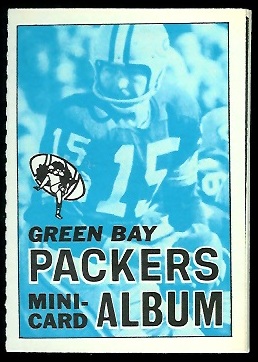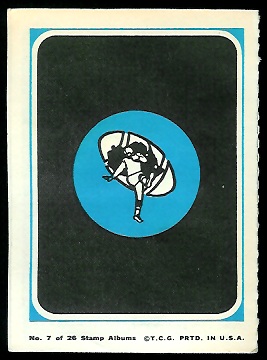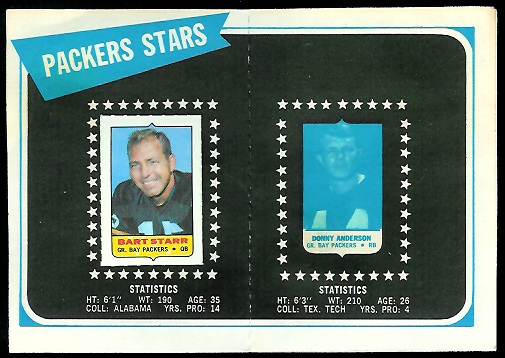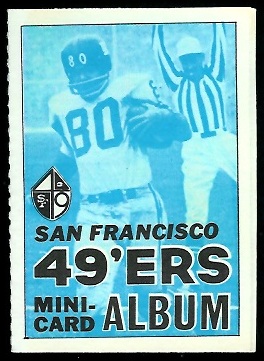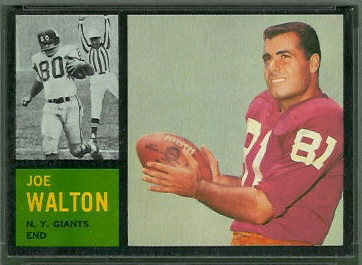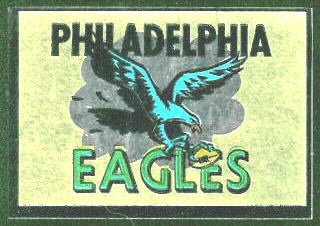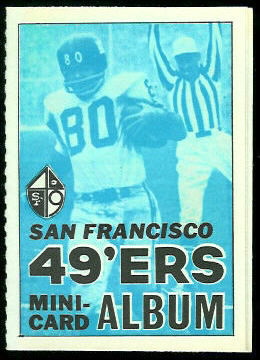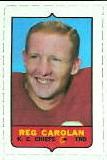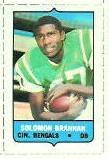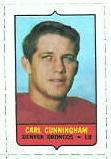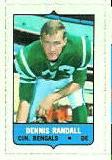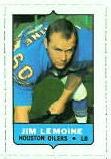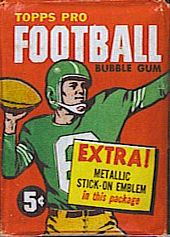
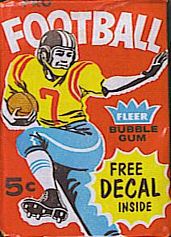 In 1960, card companies started inserting little extras into packs of football cards: stickers, posters, tattoos, decals, punch-outs, and so on. The wrappers for the packs showed what insert was inside, as you can see on the wrapper page of the Vintage Football Card Gallery.
In 1960, card companies started inserting little extras into packs of football cards: stickers, posters, tattoos, decals, punch-outs, and so on. The wrappers for the packs showed what insert was inside, as you can see on the wrapper page of the Vintage Football Card Gallery.
Not surprisingly, card collectors collect the inserts as well as the cards. (We collect the wrappers, too, of course–no part of the pack is wasted!) Most of the inserts, because they invited licking and sticking and pinning up and punching out, are harder to find than the regular cards. Some of them, such as 1968 Topps Stand Ups and 1970 Super Glossies, in my opinion are nicer than the regular cards.
Some of the inserts I know nothing about, except for their mention on the wrappers. The 1963 Fleer wrapper says there’s a Goofy Gag Card inside, and the 1964-1966 Philadelphia wrappers say the packs include comic tattoos. If anyone has pictures of those inserts, I would like to see them.
I know at least a little about the rest of the inserts from 1960 to 1971. Following is a short description of each.
1960 Fleer AFL Decals and 1960 Fleer College Pennant Decals
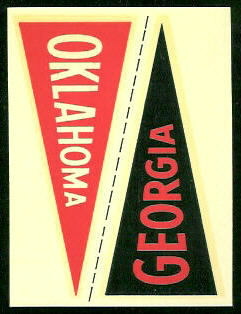
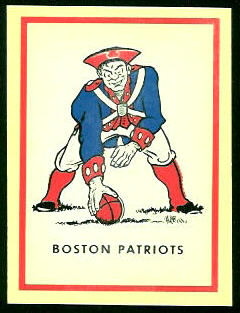 Fleer’s first football cards included a decal insert in each pack, either an AFL team logo or two college pennants. The two types of decals are considered two different sets, though to my knowledge they were distributed as if they were a single set. The 1960 Fleer football set was issued in a single series (in fact, all of them were printed on one sheet), and I believe both types of decals were included in packs of that series. The Vintage Football Card Gallery has scans of all of the decals in both the AFL Team set and the College Pennant set.
Fleer’s first football cards included a decal insert in each pack, either an AFL team logo or two college pennants. The two types of decals are considered two different sets, though to my knowledge they were distributed as if they were a single set. The 1960 Fleer football set was issued in a single series (in fact, all of them were printed on one sheet), and I believe both types of decals were included in packs of that series. The Vintage Football Card Gallery has scans of all of the decals in both the AFL Team set and the College Pennant set.
1960 Topps Metallic Stickers
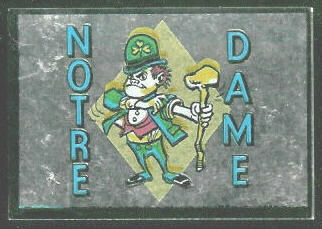
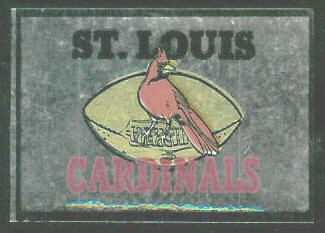 In 1960, perhaps reacting to Fleer’s innovation, Topps included their first inserts in football card packs. The Topps inserts were metallic stickers representing both college and pro teams. Topps had the rights to print cards of NFL players in 1960, so the pro teams they put on their stickers were the NFL teams. Unlike the Fleer decals, the 1960 Topps college and pro stickers are considered part of a single set.
In 1960, perhaps reacting to Fleer’s innovation, Topps included their first inserts in football card packs. The Topps inserts were metallic stickers representing both college and pro teams. Topps had the rights to print cards of NFL players in 1960, so the pro teams they put on their stickers were the NFL teams. Unlike the Fleer decals, the 1960 Topps college and pro stickers are considered part of a single set.
Pictured here are two of the stickers, Notre Dame and the St. Louis Cardinals. (1960, incidentally, was year the Cardinals moved to St. Louis.) The stickers don’t scan well, unfortunately, and any wear on the metallic finish appears in the scan as gray. If you imagine that the mottled gray is shiny, like chrome, you’ll get the picture. See the Vintage Football Card Gallery for the entire set of 1960 Topps Metallic Stickers.
1961 Fleer Magic Message Blue Inserts
I don’t know what the 1961 Fleer Magic Message Blue Inserts look like, but judging by the 1961 Fleer wrappers (see the Vintage Football Card Gallery’s wrapper page), the inserts were included in both series. Each insert contains a question about pro or college football, such as “Has the Rose Bowl always been played in California?” PSA’s set registry shows the complete set of questions in the set.
1961 Nu-Card Pennant Stickers
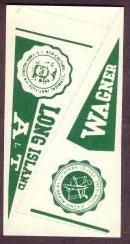
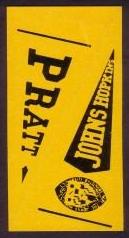 Each 1961 Nu-Card football pack included an insert that held two college pennant stickers. Two of the inserts are pictured here. You can find more pictures on eBay, and you can see the full list of pennant inserts in the PSA Set Registry. A lot of the colleges represented aren’t known for their football programs–e.g., Colby, Coker, and Kings Point–and these stickers might be the only place to see those colleges on anything resembling a football card.
Each 1961 Nu-Card football pack included an insert that held two college pennant stickers. Two of the inserts are pictured here. You can find more pictures on eBay, and you can see the full list of pennant inserts in the PSA Set Registry. A lot of the colleges represented aren’t known for their football programs–e.g., Colby, Coker, and Kings Point–and these stickers might be the only place to see those colleges on anything resembling a football card.
Amazingly, there are only 80 cards in the 1961 Nu-Card football set, but there are 269 different sticker inserts! Many of the colleges are repeated, but they’re paired up differently to make different inserts.
1961 Topps Cloth Emblems (a.k.a. Flocked Stickers)
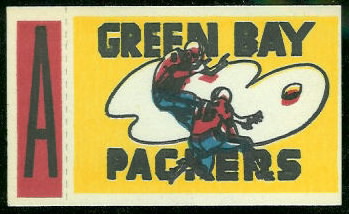 I have just one 1961 Topps Cloth Emblem sticker insert, the one pictured here. Bleah. It says Green Bay Packers, but it doesn’t picture a Packer, it doesn’t have a Packers logo, and it’s not even in Packers colors. The sticker is perforated so you can separate the “A” from the team emblem. I learned from an entry in the Topps Archives blog that this was so a kid could pull the letters off and use them to spell his name.
I have just one 1961 Topps Cloth Emblem sticker insert, the one pictured here. Bleah. It says Green Bay Packers, but it doesn’t picture a Packer, it doesn’t have a Packers logo, and it’s not even in Packers colors. The sticker is perforated so you can separate the “A” from the team emblem. I learned from an entry in the Topps Archives blog that this was so a kid could pull the letters off and use them to spell his name.
The full set of emblems–comprised of AFL, NFL, and college teams–is listed on the PSA registry site. The emblems for the NFL teams, NFL insignia, and most of the college teams came in 1961 Topps first series packs, which contained cards of NFL players. In PSA’s list, the first series emblems are the ones that were always paired with the same letter, e.g., “AIR FORCE FALCONS V.”
The emblems for the AFL teams, AFL insignia, and three more college teams came in second series packs, which contained cards of AFL players. Each second series emblem could be found paired with either of two letters. PSA’s list shows the two possible letters separated by a slash, e.g., “OREGON DUCKS C/N.” The letters that appeared on the stickers most often were the ones most commonly found in boys’ names. I don’t see Q and X at all, so Quincy and Xavier had to improvise with O’s and I’s.
A list of the first series emblems also appears on the back of the second 1961 Topps checklist, card #122. (Thanks to Pastor Scott for pointing this out in his comment below.) The second series emblems, oddly, do not appear on a checklist. Also see the discussion in C is for Checklists. For additional pictures of the emblems, see eBay.
1962 Topps Football Bucks
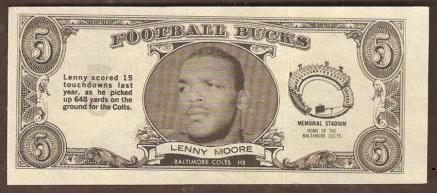 1962 Topps Bucks are play money that pictures players instead of presidents. The bills were folded once to fit into the pack, but fortunately they were not folded across the players’ faces. Until I add the Bucks to the Vintage Football Card Gallery, you can see more pictures on eBay and the set composition in the PSA set registry.
1962 Topps Bucks are play money that pictures players instead of presidents. The bills were folded once to fit into the pack, but fortunately they were not folded across the players’ faces. Until I add the Bucks to the Vintage Football Card Gallery, you can see more pictures on eBay and the set composition in the PSA set registry.
1965 Topps Magic Rub-Offs
1965 Topps Magic Rub-Offs are magic, and you can rub them off. Sorry, but I don’t have any, and that’s all I know about them. For these, also, you can find pictures on eBay and see the set composition in the PSA set registry.
1966 Topps Funny Rings
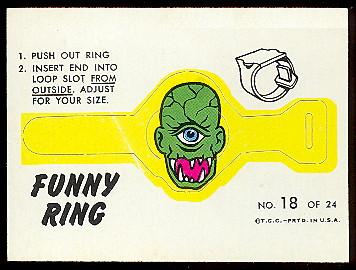 Pictured here is the “Head with One Eye” 1966 Topps Funny Ring. As the diagram shows, you can punch the ring out from the card and adjust it to fit your finger. The Funny Rings don’t have anything to do with football; Topps apparently just thought they would appeal to the 10-year-olds buying the cards. Strangely and unfortunately, the checklist for the Funny Rings is card number 15 in the 1966 Topps football card set, and it is considered necessary to complete the set. See the discussion in C is for Checklists. Also see eBay for more pictures of Funny Rings and the SGC set registry for the full list of rings.
Pictured here is the “Head with One Eye” 1966 Topps Funny Ring. As the diagram shows, you can punch the ring out from the card and adjust it to fit your finger. The Funny Rings don’t have anything to do with football; Topps apparently just thought they would appeal to the 10-year-olds buying the cards. Strangely and unfortunately, the checklist for the Funny Rings is card number 15 in the 1966 Topps football card set, and it is considered necessary to complete the set. See the discussion in C is for Checklists. Also see eBay for more pictures of Funny Rings and the SGC set registry for the full list of rings.
1967 Topps Krazy Pennant Stickers
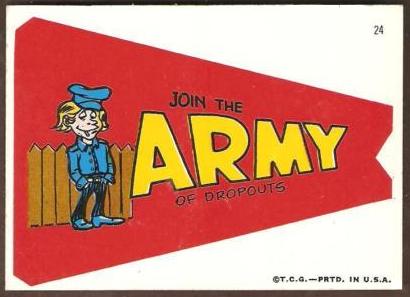 1967 Topps Krazy Pennant Stickers are also inserts that have little to do with football. Most of the team names on the pennants are Wacky Packages-style wordplays on real college and pro team names: Navel Academy, Michigan State Pen, and so on. A few are made up, such as Confused State and Diskotech. Fortunately, this time the checklist didn’t end up in the football card set. See eBay for more krazy pictures, and see the PSA set registry for the full krazy list.
1967 Topps Krazy Pennant Stickers are also inserts that have little to do with football. Most of the team names on the pennants are Wacky Packages-style wordplays on real college and pro team names: Navel Academy, Michigan State Pen, and so on. A few are made up, such as Confused State and Diskotech. Fortunately, this time the checklist didn’t end up in the football card set. See eBay for more krazy pictures, and see the PSA set registry for the full krazy list.
1968 Topps Stand Ups
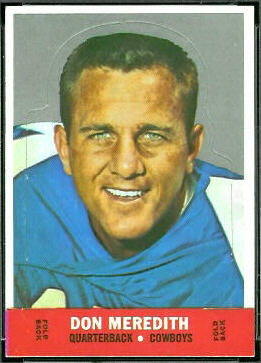 Packs of one of the two series of 1968 Topps football cards included “Stand Up” insert cards. This is my second-favorite insert set, with nice head-and-shoulders shots of the players. The cards are perforated such that you can punch them out and stand them up. As I wrote in D is for Defensive Players, Alex Karras is the only defensive player in the 22-card set, and the other 21 are offensive players. One of my previous posts provides more details on the set, and you can see the entire set of 1968 Topps Stand Ups in the Vintage Football Card Gallery.
Packs of one of the two series of 1968 Topps football cards included “Stand Up” insert cards. This is my second-favorite insert set, with nice head-and-shoulders shots of the players. The cards are perforated such that you can punch them out and stand them up. As I wrote in D is for Defensive Players, Alex Karras is the only defensive player in the 22-card set, and the other 21 are offensive players. One of my previous posts provides more details on the set, and you can see the entire set of 1968 Topps Stand Ups in the Vintage Football Card Gallery.
1969 Topps Stamps and Albums
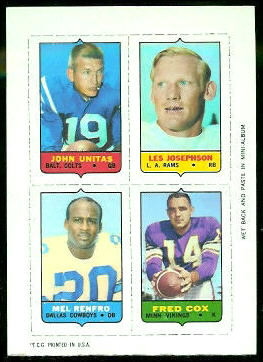 1969 Topps Stamps came four to a card, and they were inserted with stamp albums in 1969 Topps packs. Nowadays we call the cards 4-in-1’s, because if a card still has its stamps intact, we wouldn’t think of pulling it apart. One of my previous blog entries, 1969 Topps 4-in-1 Oddities, has a description of the stamps and albums. The Vintage Football Card Gallery has pictures of the whole set of 1969 Topps stamps.
1969 Topps Stamps came four to a card, and they were inserted with stamp albums in 1969 Topps packs. Nowadays we call the cards 4-in-1’s, because if a card still has its stamps intact, we wouldn’t think of pulling it apart. One of my previous blog entries, 1969 Topps 4-in-1 Oddities, has a description of the stamps and albums. The Vintage Football Card Gallery has pictures of the whole set of 1969 Topps stamps.
1970 Topps Super Glossies
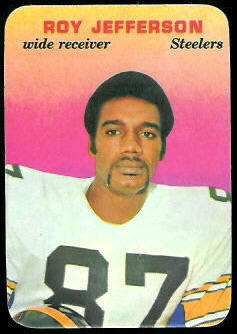 1970 Topps Super Glossies came in second series 1970 Topps packs, and they are easily my favorite insert set. Depending on the day, they might even be my favorite of all football card sets. They are unlike any football cards printed before them, with bright colors, a glassy, almost wet-looking finish, and a hint of a 3-D effect. They are easy to find, but they are often off-center or have nicks on the back from the printing or packing machinery. The gloss is also susceptible to scuffing and scratches. You can see the whole 1970 Topps Super Glossy set in the Vintage Football Card Gallery.
1970 Topps Super Glossies came in second series 1970 Topps packs, and they are easily my favorite insert set. Depending on the day, they might even be my favorite of all football card sets. They are unlike any football cards printed before them, with bright colors, a glassy, almost wet-looking finish, and a hint of a 3-D effect. They are easy to find, but they are often off-center or have nicks on the back from the printing or packing machinery. The gloss is also susceptible to scuffing and scratches. You can see the whole 1970 Topps Super Glossy set in the Vintage Football Card Gallery.
1971 Topps Game Cards
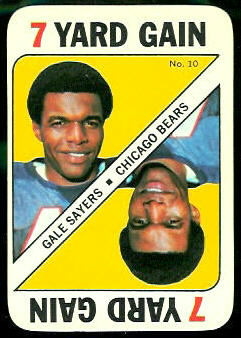 One series of 1971 Topps cards included small cards to be used for a game. Each game card pictures a player and indicates a number of yards gained or lost. The packs also included a piece of paper that unfolded into a diagram of a football field, and one of the possible game cards was a field marker. (There are way more field markers around than any of the player cards, so apparently Topps wanted to make sure you got one.)
One series of 1971 Topps cards included small cards to be used for a game. Each game card pictures a player and indicates a number of yards gained or lost. The packs also included a piece of paper that unfolded into a diagram of a football field, and one of the possible game cards was a field marker. (There are way more field markers around than any of the player cards, so apparently Topps wanted to make sure you got one.)
Pulling the next card off your stack, you would move the field marker the distance indicated on the card. I don’t remember if any of us ever made it to the endzone, but I do remember that the game moved slowly and was kind of boring. We preferred the electric football games, where you set up all your players, flipped the switch, and watched all the players run to the corner of the field.
The game cards are often off-center, so it is a challenge to assemble a centered set. You can see all of the 1971 Game Cards in the Vintage Football Card Gallery.
1968, 1970, and 1971 Topps Posters
Finally, Topps included posters in one series of cards in 1968, 1970, and 1971. (Topps issued two series of cards in each of those years, and in the non-poster series Topps inserted the Stand Ups, Super Glossies, and Game Cards discussed above.) I don’t collect posters, and since they’re not cards–or even card-sized–I haven’t tried to obtain them to put in the gallery. Check out eBay for examples of 1968 posters. You can see full sheets of 1970 and 1971 posters on the Topps Vault web site. PSA grades the 1968 and 1971 posters (they’re 5×7 inches), so the PSA site has checklists for 1968 and 1971.
